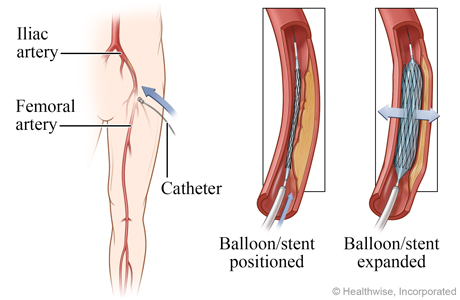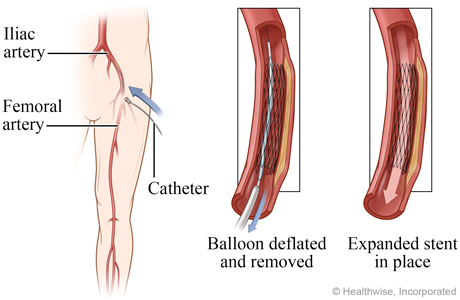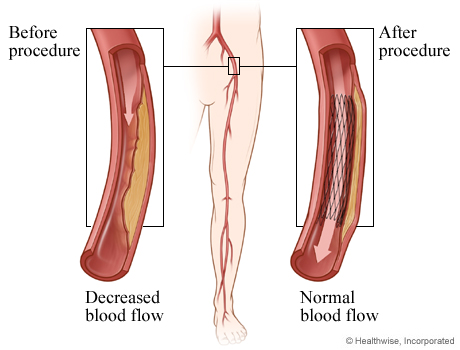Angioplasty for peripheral arterial disease of the legs
Iliac artery is narrowed by plaque

Angioplasty is used to open narrowed arteries and increase oxygen-rich blood flow to muscle and tissue. These images show angioplasty for the iliac artery. Angioplasty can also be done for the femoral, popliteal, and tibial arteries.
Catheter is inserted

After you are sedated, the surgeon inserts a thin, flexible tube called a catheter through a femoral artery in the thigh and carefully guides it to the narrowed part of the iliac artery. A wire inside the catheter is used to guide tools, including a small balloon, into the artery.
Balloon is inflated, stent is expanded

The surgeon guides the catheter to the narrowed part of the artery and inflates a small balloon at the end of a tube. The balloon may remain inflated for a short time. If the doctor is going to place a stent in the artery, the balloon is inflated inside of the stent. The pressure from the inflated balloon causes the stent to expand and press the plaque against the wall of the artery, creating more room for blood to flow.
Balloon is removed, stent is in place

Next, the surgeon deflates the balloon and removes it, leaving the expanded stent in place to keep the walls of the artery open.
Before and after angioplasty

Angioplasty can widen a narrowed part of an artery. This increases the flow of oxygen-rich and nutrient-rich blood to the leg.
Current as of: October 5, 2017
Author: Healthwise Staff
Medical Review: Rakesh K. Pai, MD, FACC - Cardiology, Electrophysiology & Adam Husney, MD - Family Medicine & Martin J. Gabica, MD - Family Medicine & David A. Szalay, MD - Vascular Surgery